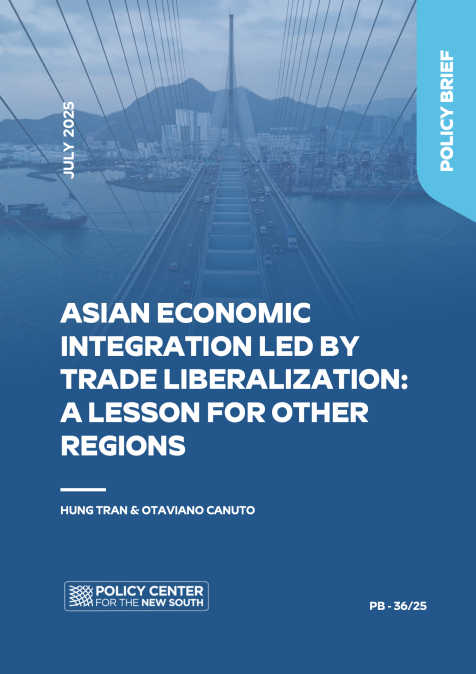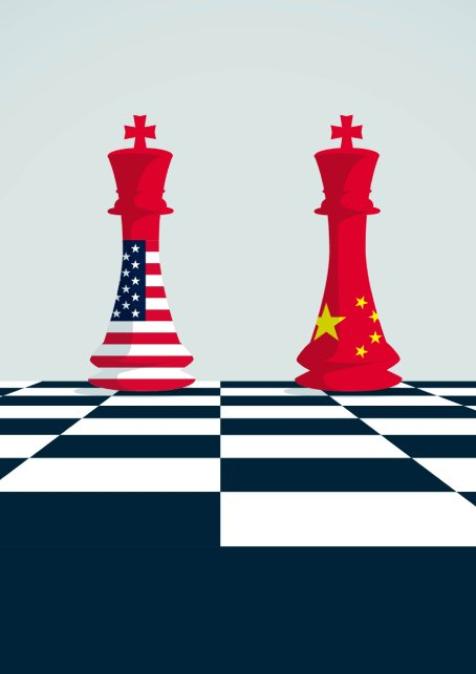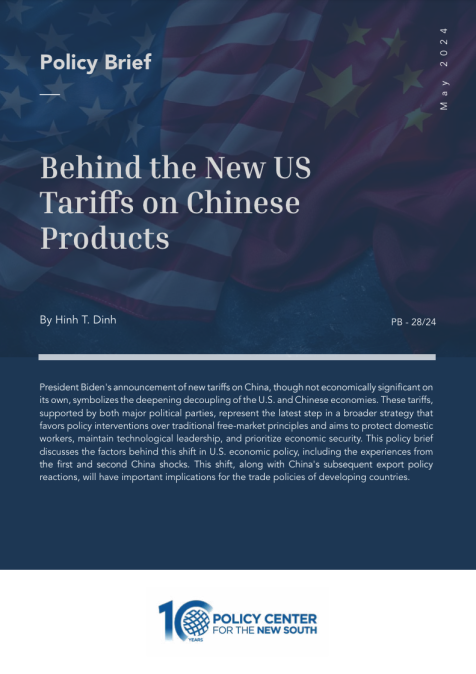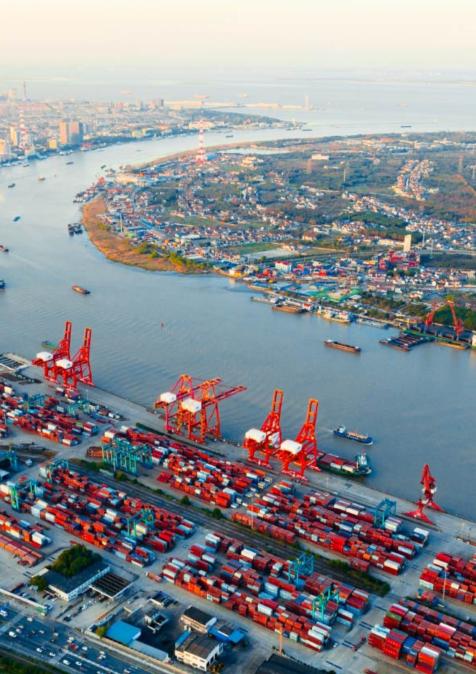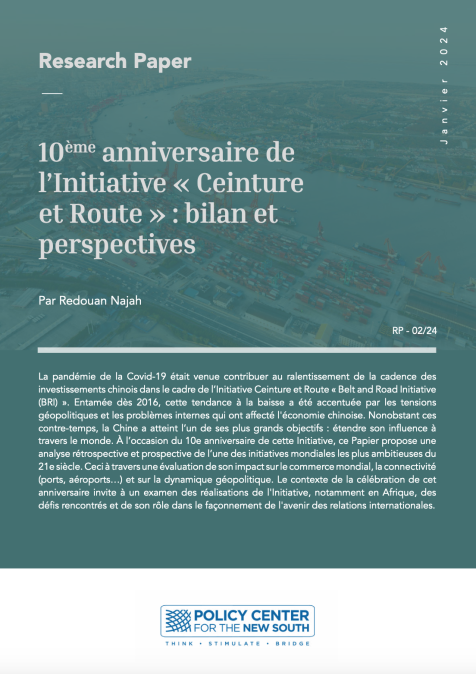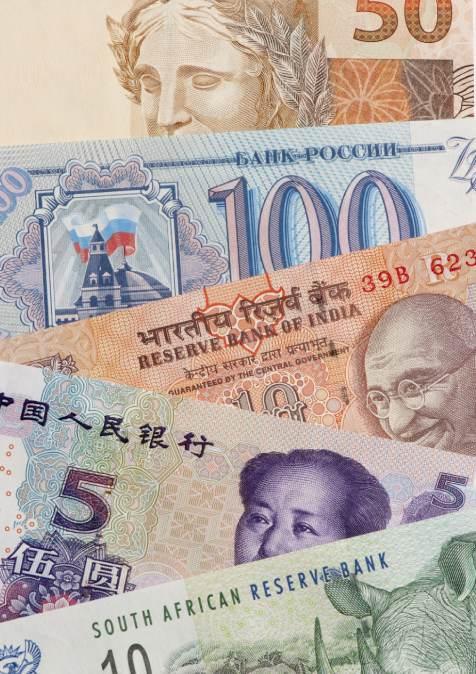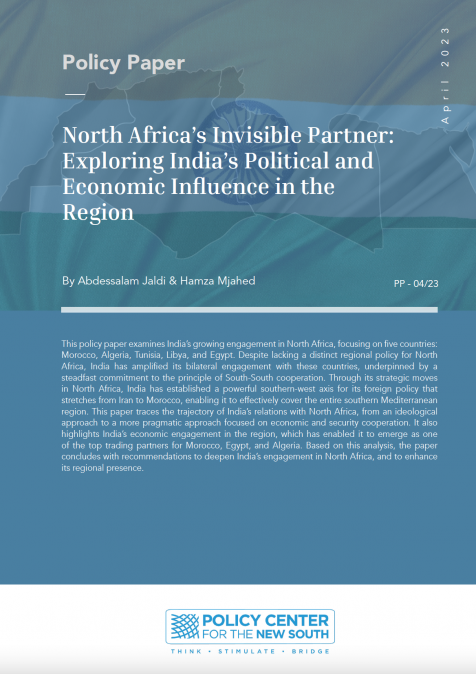Publications /
Policy Brief
Developing countries have few options to deal with the ongoing tariff war amid unpredictable shifts in global supply chains. However, regional economic integration offers a strategic path of development in these uncertain and challenging times. Helped by geographical proximity and cultural familiarity, countries in a region can benefit greatly from promoting trade with one another, reaping the benefits of comparative advantages and economies of scale—if they are able to establish a large enough single market. Asia has successfully used regional cooperation and integration as stepping stones in its interactions with the rest of the world during the course of its economic development. Asia can thus offer lessons that other regions, especially Africa and Latin America, can benefit from.
1. ASIAN ECONOMIC INTEGRATION
Asian countries have promoted economic growth via trade liberalization. Asia has grown to be the largest economic region in the world, accounting for 36.1% of the global economy in nominal terms at market exchange rates, but 55% in purchasing power parity terms, rising from 48% a decade ago. The region accounts for 53% of world goods trade, driving two-thirds of world growth in recent years.
By comparison, Europe accounts for 24.6% of the world economy in nominal terms and only 16% of global goods trade.
The main similarity between the two is that intra-regional trade accounts for about 65% of total trade for both regions. However, that similarity masks a crucial difference in the approach each region takes to promote economic integration—in the form of extensive intra-regional trade relationships.
Europe relies on a top-down approach, based on government agreements and treaties, to develop regional institutions to drive economic integration and growth. After the Second World War, six European countries initiated the European Coal and Steel Community (ECSC) to coordinate the production and utilization of the two products critical for industry, including war industries. The ECSC evolved into the European Economic Community and then the European Union, with the single market for the free movement of goods, services, capital, and labor among member states. European countries also tried to coordinate their exchange rate policies to prevent competitive devaluations hurting regional trade, setting up the European Exchange Rate Mechanism (ERM) which turned into European Monetary Union (EMU), with the European Central Bank (ECB) responsible for euro as the common currency, as called for in the 1992 Maastricht Treaty.
Those pan-European economic and financial institutions have provided the conditions for growth and avoidance of conflicts over many decades. However, by establishing a monetary union without fiscal union (fiscal policies remain in the hands of member countries), and without sufficient economic convergence among member states to qualify as an optimal currency zone, the euro area has suffered a fundamental vulnerability. This comes to the fore when euro-area countries experience asymmetric shocks during economic or financial turmoil, given their still divergent economic structures—for example during the euro-area debt crisis in 2010-11. While reforms have been made to safeguard the euro, including the European Financial Stability Mechanism and the ECB’s policy to defend the effectiveness of its monetary policy transmission, the Euro Area government bond markets still experience occasional bouts of tension whenever there is a asymmetric shock. Furthermore, friction between the EU drive for common laws and regulations vs divergent economic structures and development levels among members has caused frustration, immigration and popular resentment in some member states, contributing to Brexit in 2016, and tension between the EU institutions and certain member states such as Hungary and Slovakia.
By contrast, Asian countries have moved gradually, liberalizing trade and capital flows step by step. This pragmatic approach has been grounded in the fact that Asia has benefited from its wide range of diversified and complementary economies, at various stages of economic development. At one end of the spectrum are the advanced economies of Japan, South Korea, Taiwan, Australia, and New Zealand, which produce modern manufactured capital and consumer goods. There are then niche players offering sophisticated transportation and financial services, such as Singapore and Hong Kong, and a range of quickly developing countries, anchored by populous China, India, and the ASEAN countries. At the other end of the spectrum are several countries at the lower end of development, but endowed with natural resources. This diversity has brought to the fore the comparative advantages available to different countries in the region, making it easy for them to promote trade with one another in their development efforts. Furthermore, regional integration can enable consumers and producers to reap the benefits of economies of scale.
More specifically, the gradualist approach favoring trade was firmly embraced after the Asian financial crisis in the late 1990s. It is important to recognize that two of the world’s most important regional free trade agreements (FTA) are in Asia, setting the framework for stimulating trade and investment in the region. One is the Comprehensive and Progressive Agreement for Trans-Pacific Partnership (CPTPP) established in 2018 by 11 Asian-Pacific countries, and recently adding the United Kingdom—all together accounting for 14.5% of global GDP. The CPTPP has been driven by Japan since the U.S. under President Trump withdrew from the partnership, which had been promoted by the U.S. under President Obama.
In addition, many CPTPP member countries have signed free trade agreements (FTAs) with major trading countries in Europe and North America, and have welcomed foreign direct investment (FDI) inflows. Many FTAs between Asian countries were then amalgamated into the Regional Comprehensive Economic Partnership (RCEP)—the largest FTA in terms of population and GDP, which was launched in 2022 with the 10 ASEAN countries plus China, Japan, South Korea, Australia, and New Zealand (with 7 members also belonging to the CPTPP). The RCEP advances global supply chains based on China and account for 29% of global GDP. A novel technical feature of RCEP is the harmonization of rules of origin, a simplified 40% local content requirement, which can be certified by any member country and recognized by the rest, facilitating cross-border trade flows.
The Association of Southeast Asian Nations (ASEAN)
The Association of South-East Asian Nations (ASEAN) was founded in 1967 by Indonesia, Malaysia, Philippines, Singapore, and Thailand. By 1999, it had expanded to 10 member states, having admitted Brunei, Cambodia, Laos, Myanmar, and Vietnam.
In 1992, ASEAN leaders mandated the establishment of an ASEAN Free Trade Area, with a view to eliminate tariff barriers between member states. This effort was intensified in 1997 with the adoption of ASEAN Vision 2020 for a region with free movement of goods, services, investment, and skilled labor, to ultimately create a single production and consumption base, fostering equitable and inclusive growth. In 2003, the leaders declared the aim of establishing an ASEAN Economic Community (AEC) with the above goals, planned for 2020 but later accelerated to 2015. That was succeeded by the AEC Blueprint 2025—aiming for “an integrated, cohesive, competitive, innovative and dynamic” regional economy. Preliminary assessment of the AEC Blueprint 2025 suggests that significant progress has been made in the past 10 years, with remaining problems to be tackled in post-2025.
Even though the AEC aspires to EU-like goals of free movement of goods, services, investment, and skilled labor, it has adopted a much more gradual, flexible, and practical path. Instead of aiming for a common market, custom union, single market, and monetary union, ASEAN has proceeded to develop a series of building blocks without a rigid structure that would be seen as constraining sovereign member states—as in the euro area. These building blocks include the ASEAN Trade in Goods Agreement (ATIGA), ASEAN Comprehensive Investment Agreement (ACIA), ASEAN Trade in Services Agreement (ATISA), and Mutual Recognition Agreement (MRA) to facilitate movements of professionals and skilled workers.
While the AEC has contributed to solid growth of the ASEAN economy in recent decades, the progress on economic integration is more nuanced. The share of intra-ASEAN trade in its total trade has been stagnant at around 21%-22%—mainly because member countries host a significant number of FDI companies, which use them as bases to manufacture goods for export to the rest of the world. In addition, trade within emerging East Asia (excluding China) increased from 3% of ASEAN GDP in 2000 to 3.5% in 2020. The more pronounced integration has occurred within emerging East Asia including China: internal exports within the group increased from 12% of total exports in 2000 to 31% in 2020, reflecting substantial increases in intermediate goods trade. This was mainly due to China, whose trade share rose from 1.6% of the region’s GDP to 5.4%.
This pattern of economic integration has mixed implications for ASEAN; it brings both opportunities (exposure to the economically dynamic Asian region) and vulnerability (increased dependence on China especially for intermediate goods imports).
Based on economic progress, ASEAN launched the Local Currency Transaction (LCT) initiative in 2023 with six participating countries (Indonesia, Malaysia, Thailand, Singapore, Philippines, with Vietnam scheduled to join). A Local Currency Transaction Framework (LCTF) has also been adopted to implement the LCT plan by enhancing policy coordination and developing the necessary infrastructure to promote the use of local currencies in bilateral and intra-regional trade and direct investment transactions. In particular, modern payment and settlement systems have been developed consistent with International Standard Organization ISO 20022 to facilitate interoperability. These have been practical measures that can be undertaken by member governments, and are useful in themselves to improve the efficiency of national payment systems. Equally importantly, they lay the groundwork for regional integration by being developed based on up-to-date common standards, operating in real time, and amenable to being made interoperable.
To sum up, ASEAN has grown gradually to cover more and more areas of cooperation, leading to the launch of the ASEAN Economic Community (AEC) in 2007, with a goal of creating a unified market and production base, in order to reap economies of scale. In particular, ASEAN member countries have chosen to promote the use of local currencies by building up compatible clearing and payment infrastructures based on advanced technologies, instead of moving pre-maturely to a common currency that would impose constraints on members. Asia’s practical approach has contributed to relatively steady growth over the past few decades. This offers lessons Africa and Latin America can examine.
The Asian style of regional integration may be seen as a ‘quasi-common’ economy that eschews a formal linkup in political or monetary terms but manages to generate similar results by strong physical integration and distributed chains of production and service delivery (Canuto and Sharma, 2011). In the following section we benchmark South America’s regional integration efforts against this model, to highlight its better fit than the politically driven, broad-based, European-style integration process.
2. LESSONS FOR LATIN AMERICA
Latin America has a very low level of trade integration, with the exception of Mexico, which integrated with the U.S. and Canada as a member of the US Mexico Canada trade agreement (USMCA). Overall trade in goods accounts for 40% of Latin America’s GDP, compared to 50% for the group of emerging market and developing countries (EMDCs). In terms of intra-regional trade, Latin America vies sub-Saharan Africa for the lowest ratio, of less than 20% of regional GDP.
Apart from the USMCA, other regional FTAs including CAFTA-DR (Costa Rica, El Salvador, Guatemala, Honduras, Nicaragua, Dominican Republic, and the U.S.), Mercosur (Argentina, Brazil, Paraguay, and Uruguay) and the Pacific Alliance (Chile, Colombia, Peru, and Mexico) have not worked effectively in deepening trade relationships among member states. The U.S., Canada, the EU, and China have established bilateral FTAs with various Latin American countries.
That Latin America has fallen far short of the levels of trade and macroeconomic interdependence achieved in Asia and Europe has been explained by Ricardo Hausmann as reflecting the fact that Latin Americans want to consume similar things, which they don’t produce. This seemingly superficial observation may be said to reflect three factors: relatively lower presence of dense, complex manufacturing value chains as in Asia, high levels of trade protection in the South American countries that managed to industrialize—such as Brazil (Canuto et al, 2015)—and, as a consequence, regional dependence on exports of agricultural and mineral commodities, with manufacturing imports from outside the region predominating in most countries.
It is important to acknowledge that geography helps explain the different paths of Asia and Latin America. East Asia is connected by a sea, whereas the Latin America and Caribbean region includes a big land mass with major mountain ranges and limited natural connectivity. History also matters; in East Asia, trade relationships go back millennia.
The argument here is not for an impossible emulation of such geographical-historical idiosyncratic experiences, but that—like in Asia—integrative infrastructure investments and appropriate business-friendly cross-country policy environments can reduce barriers to regional integration in Latin America. Poor infrastructure, especially inter-regional transportation, reinforces the lack of integration. Furthermore, political instability and the persistent influence of autarkic economic policy thinking, especially inward-looking import substitution policies widely adopted in many countries in the region after independence, can be counted as factors hampering regional integration.
The Asian experience offers some lessons for Latin America:
- Ensure physical integration via cross-country infrastructure investments takes place;
- Instead of pursuing grandiose agreements, shift the focus from creating multiple subregional institutional bodies to identifying sectoral cooperation opportunities;
- Interoperability within the region should be enhanced. Factors of production, such as capital and labor, should be granted greater mobility, such as enhanced engagement by member states to implement measures including mutual recognition of professional degrees, portability of social security, less onerous border controls, scaling up of best practices across the region, and increased financial engagement of the regional financial systems. Further, the private sector, which forms the bedrock of Asian-style regional integration, needs to be given similar privileges throughout Latin America, or at least helped in setting up production chains throughout the region.
3. THE AFRICAN CONTINENTAL FREE TRADE AGREEMENT (AfCFTA): MORE NECESSARY THAN EVER
Africa is rich in natural resources including minerals and agricultural products. It is also in a position to reap the benefits of technological advances to harness solar and wind energy. Yet Africa remains a land of opportunity and potential, languishing at the bottom of world rankings of per-capita income and growth (Tran, 2024).
Africa has made efforts to promote development. It launched the Organization of African Unity (OAU) in 1963, focusing on political solidarity to promote policy coordination among members so they could speak with one voice on important issues in international forums. In 2002, the OAU transformed into the African Union (AU) to accelerate the integration process.
On economic and monetary cooperation, nine separate and sometimes overlapping regional organizations have been formed: the Economic Community of West Africa (ECOWAS in 1976), the Central African Monetary Union (CEMAC, 1983), the Economic Community of Central Africa (CEAC, 1983), the Southern African Development Community (SADC, 1992), the Common Market for Eastern and Southern Africa (COMESA, 2000), the Intergovernmental Authority on Development (IGAD, 1986/93), the East African Community (EAC, 1999), and the Arab Maghreb Union (UMA, 1986). Importantly, in 1991 the Abuja Treaty launched the African Economic Community (AEC) to coordinate those regional groupings. Then in 2018, the African Continental Free Trade Agreement (AfCFTA) was signed, creating the world’s largest free trade area by number of member countries, with a secretariat to coordinate the implementation of the trade agreement.
These institution-building efforts have helped promote a certain measure of economic integration and representation of Africa on the world stage—but it is a work in progress. The regional economic groupings have encouraged trade between neighboring countries, but intra-African trade remains quite low at 15%, compared with about 65% for Asia and Europe.
Generally speaking, African states have not been able to cooperate effectively in dealing with economic initiatives from the major powers as a group, but still acting individually. The AU has made some progress in being invited to join the G20 as a full member. It has signed a critical minerals agreement with the EU. But it remains to be seen how effective it could be in representing and fighting for Africa’s interests.
In terms of minerals, the AU released its African Mining Vision in 2009, emphasizing the development of processing and manufacturing, which add value to the extraction of mineral resources. In 2016 it launched the African Mineral Development Center to coordinate and oversee the implementation of the African Mining Vision. In 2019, the AU articulated the African Commodity Strategy, with the goal of transforming Africa from a supplier of minerals to a player adding value to integrated in global value chains.
However, the Mineral Development Center has not been ratified by enough member states to become operational. Consequently, African countries still manage their mineral development strategy individually, with little coordination with other countries.
In short, Africa can make good use of the opportunities to implement and reap the benefits of AfCFTA by developing intercontinental trade and value chains based on agriculture and minerals. But doing so requires African countries to overcome current obstacles to cooperate fully and coordinate closely their economic policies. In this respect, the Regional Economic Communities (RECs) have created coordination problems that need to be overcome in the implementation of AfCFTA. Failing that, Africa will remain a place for major countries to compete for influence and access to resources.
In short, based on Asia’s experiences, Africa can accelerate the implementation of AfCFTA to establish a large and unified market and production base to achieve economy-of-scale benefits and help the continent better deal with the superpowers. According to the World Bank, full AfCFTA implementation would boost the continent’s exports to the world by 154% by 2030, with intra-continental trade up by 104%—increasing incomes by 7% and lifting 30 million people out of extreme poverty.
On the basis of the benefits offered by AfCFTA implementation, serious efforts should be made to rectify the main institutional weaknesses of the African Union—in particular its lack of fiscal independence—to judiciously promote African economic integration.
The lessons we have highlighted for Latin America from Asia’s experience also apply to Africa. Integrative infrastructure investment will be necessary to make possible a ‘de-fragmentation’ of Africa (World Bank, 2012), establishing a large and unified market and production base that provides economy-of-scale benefits. Enhanced interoperability of factors of production within the region should be pursued through behind-the-border business-environment reforms.
REFERENCES
Canuto, O. and Sharma, M. (2011). Asia and South America: A Quasi-Common Economy Approach, Economic Premise No. 65, World Bank, September.
Canuto, O.; Fleischhaker, C.; and Schellenkens, P. (2015). The Curious Case of Brazil’s Closedness to Trade, Policy Research Working Paper 7228, World Bank.
Tran, H. (2924). Modernizing Agriculture Should Be the Growth Model for Africa, Policy Center for the New South.
World Bank (2012). De-fragmenting Africa: Deepening Regional Trade Integration in Goods and Services, World Bank.

